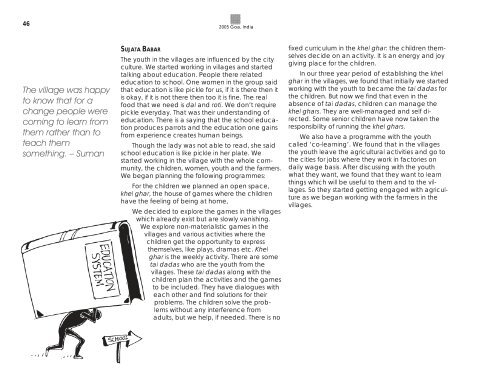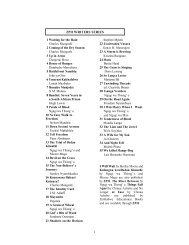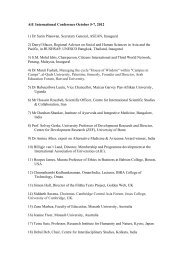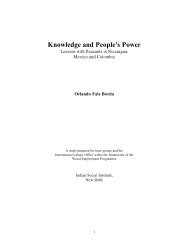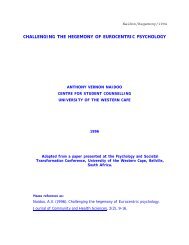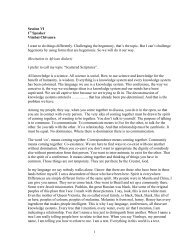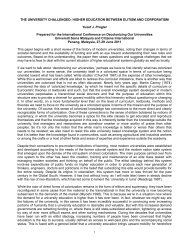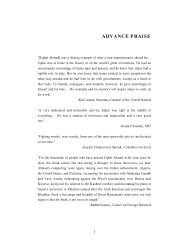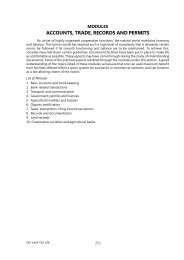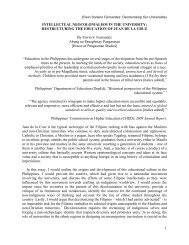... for they have their own thoughts - Multiworld India
... for they have their own thoughts - Multiworld India
... for they have their own thoughts - Multiworld India
Create successful ePaper yourself
Turn your PDF publications into a flip-book with our unique Google optimized e-Paper software.
462005 Goa, <strong>India</strong>The village was happyto know that <strong>for</strong> achange people werecoming to learn fromthem rather than toteach themsomething. – SumanSUJATA BABARThe youth in the villages are influenced by the cityculture. We started working in villages and startedtalking about education. People there relatededucation to school. One women in the group saidthat education is like pickle <strong>for</strong> us, if it is there then itis okay, if it is not there then too it is fine. The realfood that we need is dal and roti. We don’t requirepickle everyday. That was <strong>their</strong> understanding ofeducation. There is a saying that the school educationproduces parrots and the education one gainsfrom experience creates human beings.Though the lady was not able to read, she saidschool education is like pickle in her plate. Westarted working in the village with the whole community,the children, women, youth and the farmers.We began planning the following programmes:For the children we planned an open space,khel ghar, the house of games where the children<strong>have</strong> the feeling of being at home,We decided to explore the games in the villageswhich already exist but are slowly vanishing.We explore non-materialistic games in thevillages and various activities where thechildren get the opportunity to expressthemselves, like plays, dramas etc. Khelghar is the weekly activity. There are sometai dadas who are the youth from thevillages. These tai dadas along with thechildren plan the activities and the gamesto be included. They <strong>have</strong> dialogues witheach other and find solutions <strong>for</strong> <strong>their</strong>problems. The children solve the problemswithout any interference fromadults, but we help, if needed. There is nofixed curriculum in the khel ghar: the children themselvesdecide on an activity. It is an energy and joygiving place <strong>for</strong> the children.In our three year period of establishing the khelghar in the villages, we found that initially we startedworking with the youth to became the tai dadas <strong>for</strong>the children. But now we find that even in theabsence of tai dadas, children can manage thekhel ghars. They are well-managed and self directed.Some senior children <strong>have</strong> now taken theresponsibility of running the khel ghars.We also <strong>have</strong> a programme with the youthcalled ‘co-learning’. We found that in the villagesthe youth leave the agricultural activities and go tothe cities <strong>for</strong> jobs where <strong>they</strong> work in factories ondaily wage basis. After discussing with the youthwhat <strong>they</strong> want, we found that <strong>they</strong> want to learnthings which will be useful to them and to the villages.So <strong>they</strong> started getting engaged with agricultureas we began working with the farmers in thevillages.


